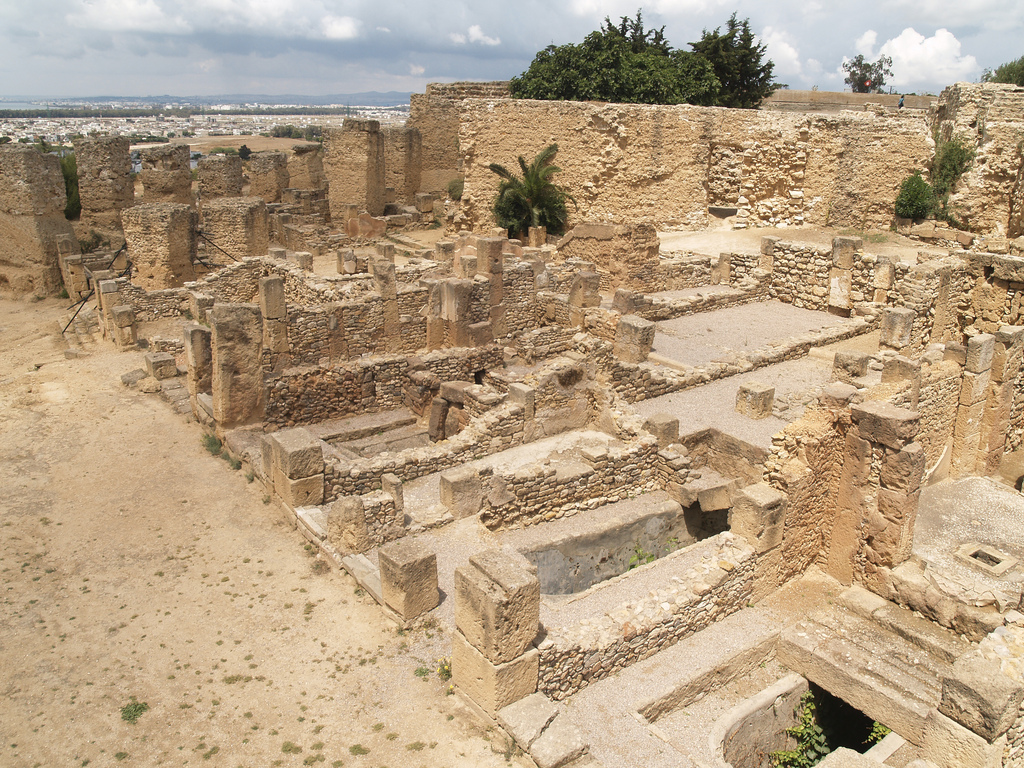
The study was published in the journal Quaternary International.
The armor resembles an apron-like waistcoat and it could be worn quickly, even without help from another person. Study lead researcher Patrick Wertmann, who is also a researcher at the Institute of Asian and Oriental Studies of the University of Zurich, explained that the armor "is a light, highly efficient one-size-fits-all defensive garment" for soldiers of a vast army.
The researchers called it an early example of bionics, or taking inspiration from nature for human technology. The armor had fish-like overlapping leather scales that helped protect its wearer against blows, stabs and shots, said Mayke Wagner, study co-researcher and the scientific director of the Eurasia Department of the German Archaeological Institute. Wagner is also head of the institute's Beijing office.
Leather scale armor is rare, say experts
The experts discovered the leather garment at Yanghai cemetery, an archaeological site near the city of Turfan. Local villagers found the ancient cemetery in the early 1970s.
Turfan sits on the rim of the Taklamakan Desert. The city has long been the center of a fertile oasis and an important trade center on the main northern branch of the Silk Road from Hami to Kashgar (Kashi).
Since 2003, archaeologists have excavated more than 500 burial sites in Turfan, along with the grave containing the leather armor. According to their findings, ancient people used the cemetery continuously for almost 1,400 years, from the 12th century B.C. until the second century A.D.
These people didn't leave written records, but ancient Chinese historians called the people of the Tarim Basin the Cheshi people. Wertmann added that they lived in tents, practiced agriculture and kept animals like cattle and sheep. They were also proficient horse riders and archers.
The armor is a rare find, especially since the only other well-preserved ancient leather scale armor with a known provenance was unearthed in the ancient Egyptian tomb of King Tutankhamun, from the 14th century B.C.
Another well-preserved leather scale armor dates from the eighth to the third century B.C. It is housed at the Metropolitan Museum of Art in New York City, but its origin remains unknown.
It was a "big surprise" to find the leather scale armor, said Wagner. The research team discovered the garment in the grave of a man who died when he was about 30 and was buried with several artifacts like two horse cheekpieces made from horn and wood, a sheep skull and pottery.
At first, the "dusty bundle of leather pieces [in the burial]" didn't seem interesting to the archaeologists because the finds of ancient leather objects are "quite common in the extremely dry climate of the Tarim Basin," explained Wagner.
According to a reconstruction of the body armor, it had an impressive 5,444 small leather scales and 140 larger scales that are likely made of cow rawhide. The scales were "arranged in horizontal rows and connected by leather laces passing through the incisions," shared Wagner.
The different scaled rows overlap, a style that inspired Greek historian Herodotus to call similarly fashioned armor that was worn by fifth century B.C. Persian soldiers as "the scales of a fish."
A plant thorn stuck into the armor gave a radiocarbon date of 786 B.C to 543 B.C. This suggests that the armor was much older than the fish-like armor worn by the Persians.
Based on the researchers' reconstruction, the armor would have weighed up to 11 pounds (5 kilograms). (Related: Researchers find world’s oldest stone tools in Kenya.)
An "utterly unique" discovery
The discovery is unique because it remains the only scale armor from "this or an earlier period in China," explained Wagner. While armor fragments have also been discovered in Eastern China, they were of a different style.
According to the history of scaled armor, West Asian engineers developed scale armor to protect chariot drivers in about 1500 B.C., when chariotry became part of the military. Soon after, this style of armor spread northward and eastward to the Persians and Scythians and eventually to the Greeks.
However, the Greeks thought the design "was always exotic" and they preferred other types of armor," said Wertmann.
Because of its local uniqueness, it's possible that the newly described armor wasn't made in China. It resembles like Neo-Assyrian military equipment from the seventh century B.C., which can be seen in rock carvings.
According to Wertmann, the piece of leather scale armor could have been made in the Neo-Assyrian Empire or the neighboring regions. If this is true, then the Yanghai armor is "one of the rare actual proofs of West-East technology transfer across the Eurasian continent during the first half of the first millennium B.C.E.," wrote the researchers.
The armor mainly protects the wearer's front torso, hips, left side and the lower back. The design fits people of different statures since width and height can be adjusted by the thongs.
Thanks to the left-side protection, the wearer could easily move his right arm. The armor seems to be designed for both mounted fighters and foot soldiers, "who have to move rapidly and rely on their own strength," added Wertmann. The horse cheekpieces also found in the burial suggest that the tomb owner could have been a horseman.
Visit Artifacts.news to read more articles about fascinating archaeological finds.
Watch the video below to learn about Indian artifacts from Saginaw.
This video is from the channel Dennis Morrison Channel on Brighteon.com.
More related stories:
Ancient potsherd inscription may be the missing link in the alphabet’s history, researchers suggest.
Researchers discover what may be the largest land drawings ever made.
Sources include:
Please contact us for more information.























